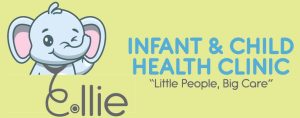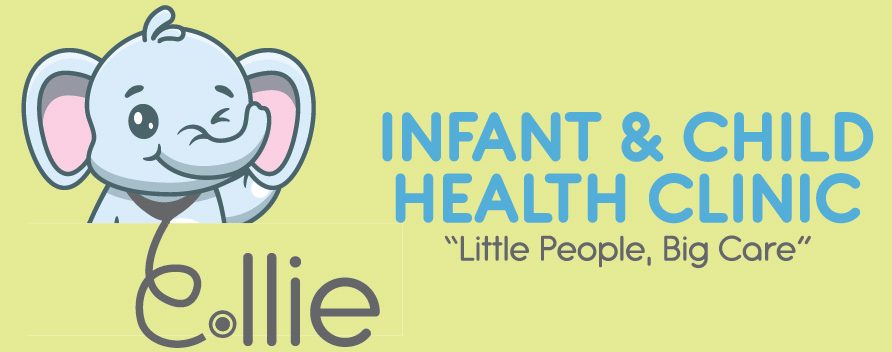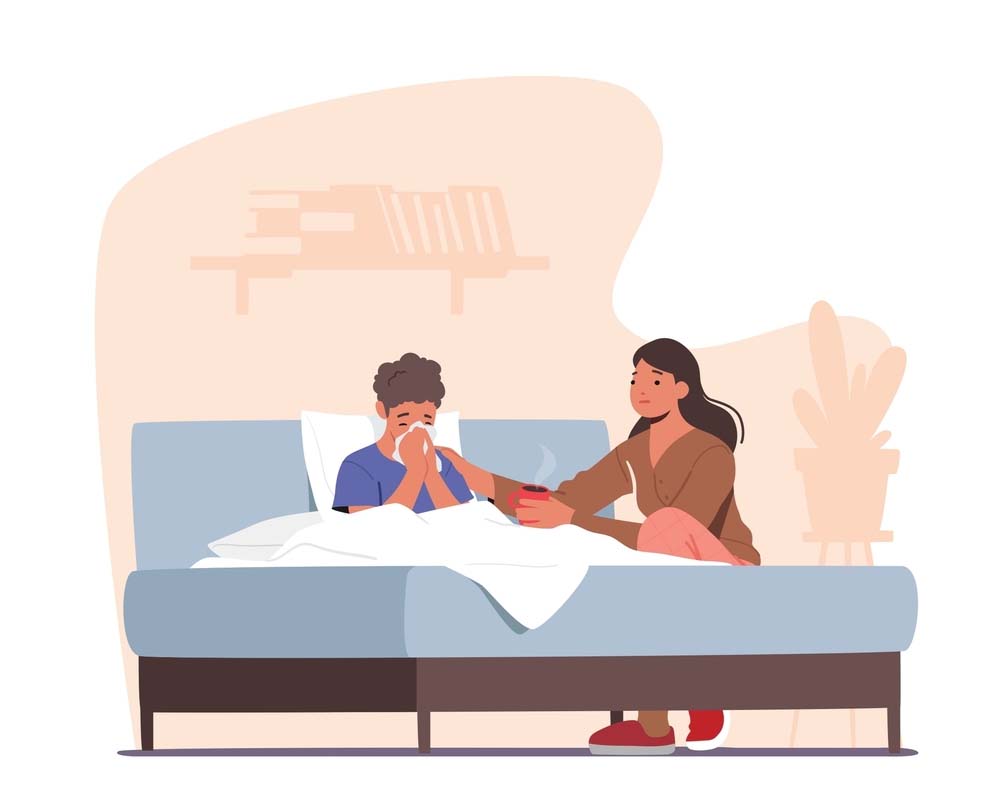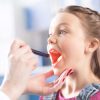Navigating Coughs and Colds in Children
With children back in school, the likelihood of them catching coughs and colds increases. Understanding the nuances of this common ailment will help empower you to take care of your little ones.
In this blog we will explore the causes, symptoms and effective management strategies for paediatric coughs and colds.
Understanding the Common Culprits:
- Rhinovirus – Rhinovirus is the most frequent troublemaker, causing the majority of colds in children and adults. This virus spreads through respiratory droplets and contact with contaminated surfaces.
- Respiratory Synctial Virus (RSV) – Tends to rear its ugly head during our cold season. Symptoms range from a mild cold to a lower respiratory infection affecting the ‘bronchioles’ (small airways in the lungs) known as bronchiolitis, which can range from mild to severe. Infants and young children under 2 years are especially susceptible. Infants born prematurely or with certain heart and lung conditions are at risk of severe bronchiolitis.
- Symptoms of often being with cough, sneezing, runny nose mimicking the common cold but may evolve into wheezing and difficulty breathing as the infection progresses.
- Influenza Virus – This is more than just the Common Cold. The ‘flu’ presents with some of the common symptoms such as a sore throat (less likely to present with a runny or stuffy nose) but beyond that, there will be high fevers and chills, body aches and extreme weakness and fatigue. Unlike the common cold, influenza can lead to severe complications in the very young, the elderly and those with weakened immune systems. The annual Influenza vaccine aims to protect these vulnerable groups of people.
- Adenovirus – Adenovirus doesn’t just limit itself to cold symptoms, it also causes conjunctivitis (pink eye), gastroenteritis (diarrheal disease)- it is often seen in daycare settings.

Unpacking the Symptoms:
- Nasal congestion and runny nose – These are the tell-tale signs. The body’s defense system kicks in, producing excess mucous to trap and eliminate the invading virus.
- Sneezing and sore throat – This is the body’s attempt to expel the virus from the nasal passages. The sore throat arises from the irritation caused by the virus in the tissues of the throat.
- Coughing – This is a protective reflex and the body’s way of clearing the airways. It helps expel excess mucous, irritants and viruses.
- Low- grade fever (37.5 -38.3 degrees Celsius) – A mild increase in body temperature is common as the immune system works to fend off the virus. This is a normal inflammatory response and protective up to a certain extent.
Duration and Progression of Symptoms:
Cold symptoms usually develop gradually and peak within a few days. Between one to three days, symptoms usually start as tickle in the throat or a sore throat with sneezing and a runny nose or a stuffy nose and cough developing. Between days 4 to 7, symptoms peak. The overall duration can vary but most people start feeling better around day 7 to 10, with or without treatment.
Home Remedies for the Common Cold:
- Rest is the Best Remedy – Parents often feel helpless and want to turn to medications when their child is sick in the hope they will make them feel better faster. But nothing will make them feel better than rest and letting the cold cure itself. Antibiotics are not effective since colds are caused by viruses.
- Hydration is Key – Why it helps: adequate fluid intake helps prevent dehydration. Warm fluids help to thin mucous and soothe irritated throats. Herbal teas, broths and clear soups are ideal. In the breast-feeding baby, ensure your baby is taking feeds as usual. You may find you need to give smaller but more frequent feeds.
- Gentle nasal saline drops or spray – For infants and young children, use saline nose drops to clear nasal passages gently. This helps with breathing and minimizes discomfort.
- Elevate the head during sleep – Place a pillow or raise the head of your child’s mattress slightly to help with nasal drainage and better breathing while asleep.
- Steamy bath or shower – Warmth and moisture- a steamy bath helps with congestion in your little ones. Or simply sitting with your baby for about 15 minutes in a closed steamy bathroom with the hot water turned on will help. For older children/teens, steaming over a hot bowl of water with the head covered with a towel is helpful. Be cautious to avoid burns.
- Cool- mist humidifier – Maintaining moisture in room air will help soothe irritated airways and soothe congestion by decreasing dryness of air passages.
- Honey for cough relief – A spoonful of honey (or two!) for children over 1 year is an effective remedy to soothe coughs. Give it mixed in warm water or tea to help soothe the throat too.
- Nasal suction bulb – Most children under 4 years old will not know how to blow their noses. A rubber suction bulb will help ease the stuffy nose. Saline nose drops a few minutes prior to suctioning will help loosen the mucous.
To Medicate or Not to Medicate:
- Antibiotics – Colds are usually caused by viruses and antibiotics are ineffective. Overuse of antibiotics may lead to antibiotic resistance and render antibiotics ineffective when they are actually needed. In some instances, a cold may complicate (see red flags below) and an antibiotic may be indicated as in an ear infection or sinusitis; this should always be under the guidance of your doctor.
- Cough and Cold Preparations and Antihistamines – Over-the-counter cough and cold medicines are intended to treat the symptoms of coughs and colds, not the underlying disease. Research suggests that these medicines haven’t been proved to work any better than inactive medicine (placebo). More important, these medications have potentially serious side effects such as increased heart rate, hallucinations and nausea, and have also been known to cause fatal overdosing. They should certainly be avoided in children under 6 years old. Antihistamines are no more effective than placebos in relieving the symptoms of coughs and colds and have harmful side effects such as sedation and dizziness.
- Paracetamol and Ibuprofen – These simple pain- killers are helpful to help with fevers and the aches and pains that are associated with a cold. Ibuprofen should not be given to a baby under 6 months of age.
- Aromatic Inhalants and Decongestants – Menthol and eucalyptus oils can be added to warm water to create a vapour, which is inhaled to relieve congestion and ease breathing. This encourages inspiration of warm, moist air which can also provide comfort. They can also be applied to a pillow or clothing or rubbed on the chest or back. They are not recommended in babies under 3 months.
- Intranasal Decongestants – In the form of drops or spray may be used with caution in children over 2 years.
Differentiating from other illnesses:
While cold symptoms overlap with other respiratory illnesses, the absence of high fevers and the gradual onset help distinguish it from more serious infections like the flu which tends to present more abruptly.
When to Seek Medical Attention:
While most colds resolve on their own, there are certain warning signs that are red flags:
- High fever of > 38 degrees Celsius in infants < 6 months, or > 38.9 degrees Celsius in older infants and children
- a fever persisting more than 3 days
- ear pain or ear tugging with irritability
- severe sore throat
- severe headache
- refusal to take milk feeds and fluids, dry nappies in 12 hours
- wheezing and difficulty breathing or chest pain while breathing (take to the Emergency Department)
- symptoms that persist for more than 10 days




